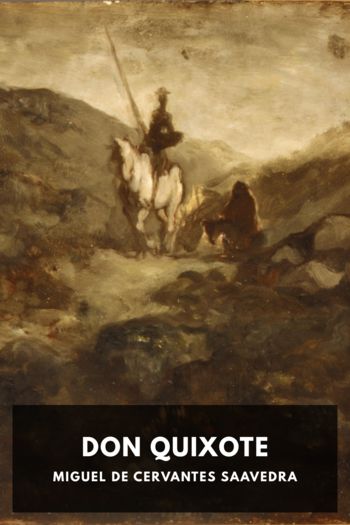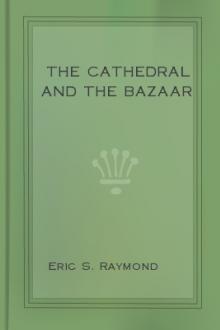Bashan and I by Thomas Mann (best black authors .TXT) 📕

- Author: Thomas Mann
Book online «Bashan and I by Thomas Mann (best black authors .TXT) 📕». Author Thomas Mann
The stream behaves like all other members of its family, the small as well as the smallest, that is to say, according to the weather and the water conditions in the upper mountain regions. Sometimes its course will be a mere green flowing tunnel with the rocks scarcely covered and with the gulls appearing to stand stilt-legged on the very surface itself. And then, again, it will assume a most formidable character, swelling into a wide stream, filling its bed with gray watery fury and tumult, and bearing along in its headlong course all kinds of unseemly objects such as old baskets, pieces of wooden crates, bushes, and dead cats in its circling wrath, and showing a great disposition to flooding and to deeds of violence.
The reserve or overflow channel is also armoured against high water by the same parallel, slanting, and hurdle-like arrangements of willow branches. It is covered with beach-grass and wild oats as well as with the show-plant of the neighbourhood, the dry, omnipresent blue sage. It offers good walking, thanks to the strip of quay formed of tooled and even stone, which runs along the extreme limit of the water. This gives me a further, and in fact favourite, possibility of adding variety to my promenades.
It is true that the unyielding stone is not particularly good going, but one is fully recompensed by the intimate proximity of the water. Then one is also able now and then to walk in the sand beside the quay. Yes, there is real sand there between the gravel and the beach-grass, sand that is a trifle mixed with clay and not so sacredly pure as that of the sea, but nevertheless real sand that has been washed up. I am thus able to fancy myself strolling upon a real strand down there, inscrutably drawing my foot along the perilous edge of the salt flood. There is no lack of surgings, even if there is of surges, nor of the clamour of gulls, nor of that kind of space-annihilating monotony which lulls one into a sort of narcotic absentmindedness. The level cataracts are rushing and roaring all around, and halfway to the ferryman’s house—the voice of a waterfall joins the chorus—from over yonder where the canal, debouching at a slant, pours itself into a river. The body of this fall is arched, smooth, glassy like that of a fish, and an everlasting boiling tumult goes on at its base.
It is beautiful here when the sky is blue and the flat ferry decorated with a pennant in honour of the weather or some other festival occasion. There are other boats in this spot, but the ferry is fastened to a wire rope which in turn is fastened to another and thicker wire cable. This is stretched across the river in such a way as to let a pulley run along it. The current itself furnishes the motive power for the ferryboat and a pressure from the ferryman’s hand upon the rudder does the rest. The ferryman lives in the ferry-house with his wife and child, and this house lies a short distance from the upper footpath. It has a little garden and a henhouse, and is evidently an official dwelling and therefore rent-free. It is a kind of villa of liliputian proportions, lightly and whimsically built with little bays and gables, and appears to boast of two rooms below and two above. I love to sit on the bench in front of the garden close to the upper footpath. Bashan then squats upon my foot; the hens of the ferryman amble about me and give their heads a forward jerk with every step. And usually the cock comes to perch upon the back of the bench and lets the green Bersaglieri feathers of his tail hang down behind, sitting beside me thus and measuring me luridly from the side with his red eye.
I watch the traffic on the ferry. It could scarcely be called strenuous, nor even lively, for it consummates itself, at large and liberal intervals. So I find all the more pleasure in the scene when a man or a woman with a market-basket appears on the farther bank and demands to be carried across the river. For the poetic element in that fine call, “Ferry ahoy!” remains full of human captivation as in ancient days, even though the action fulfils itself, as here, in new and progressive forms. Double steps of wood for the coming and the departing traveller lead down the escarpment on both sides into the bed of the river and to the landing-places. And on both sides there is an electric button affixed to the rail.
A man appears on the other bank, stands still and peers across the water. No longer, however, as in former times, does he hollow his hands into a trumpet and shout through them. He walks towards the push-button, stretches out his arms and performs a slight pressure with his thumb. There is a clear, thin tinkle in the house of the ferryman. This is the modern “Ferry ahoy!” and it is poetic even thus. There stands





Comments (0)